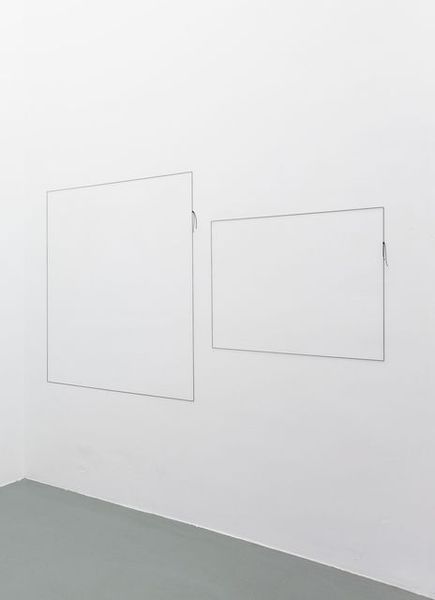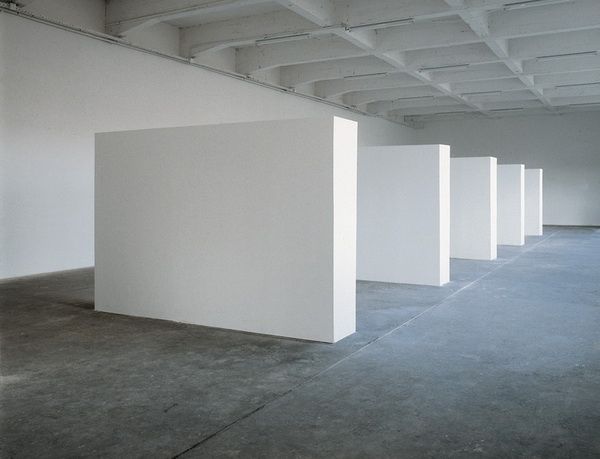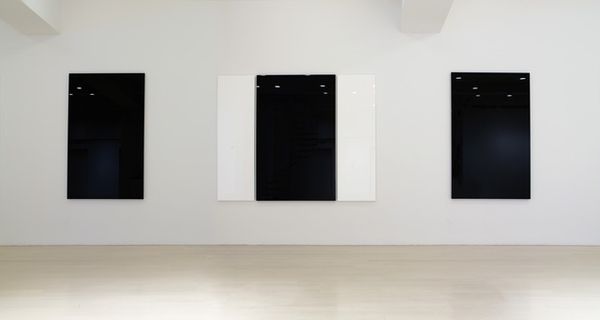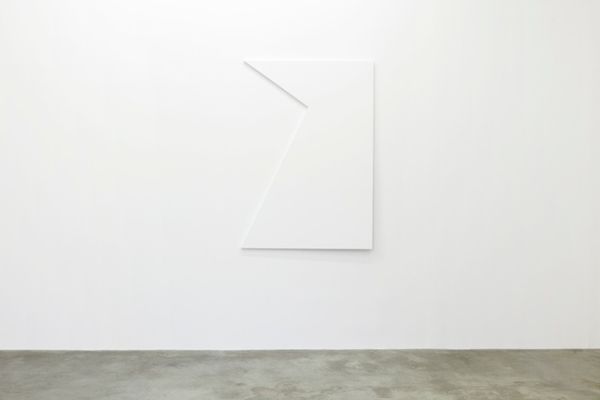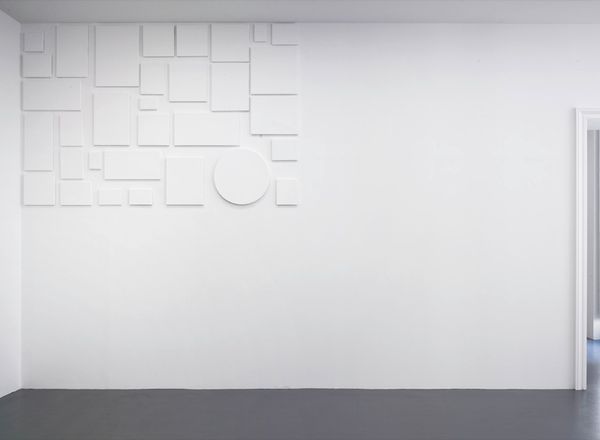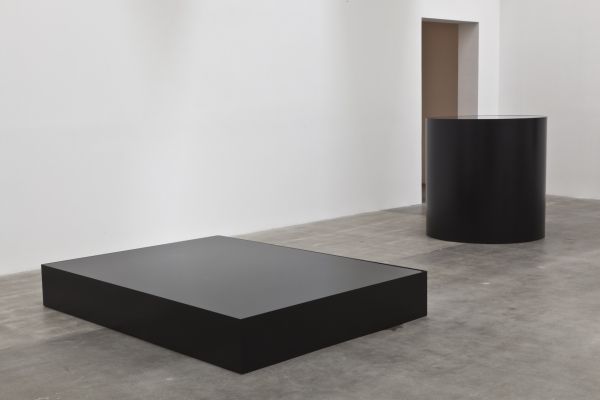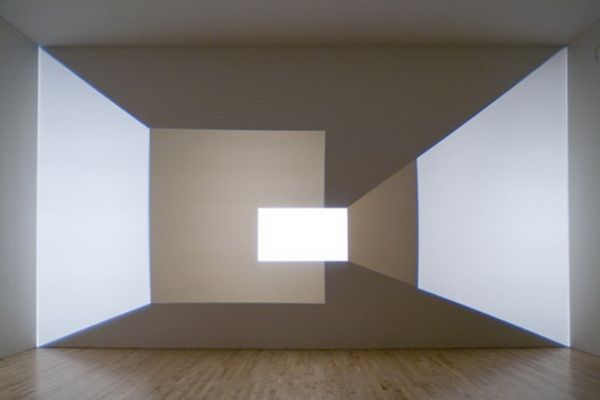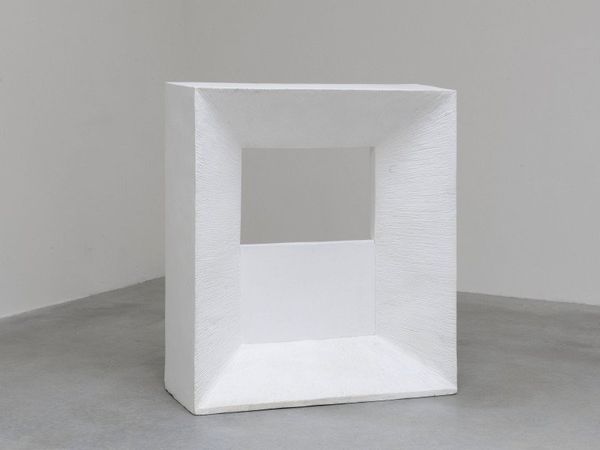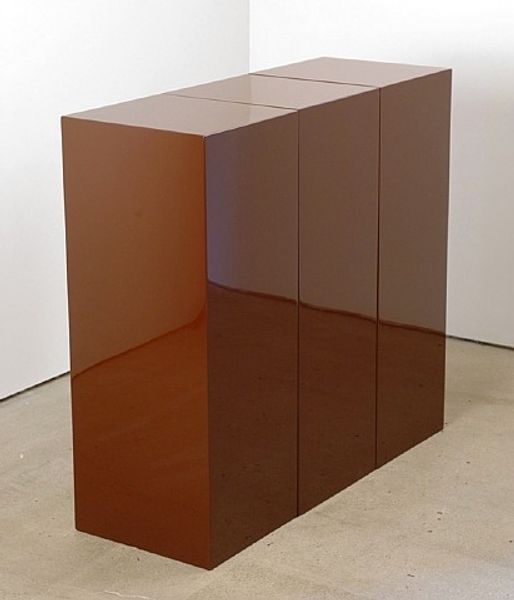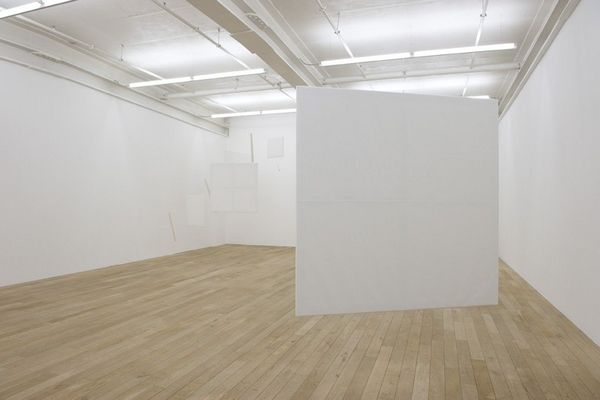
dé-finition/méthode #4: peint / repeint (‘la france défigurée’ 1969) / non peint 1973
0:00
0:00
painting, acrylic-paint, installation-art
#
contemporary
#
conceptual-art
#
painting
#
minimalism
#
acrylic-paint
#
installation-art
#
abstraction
#
line
Copyright: Claude Rutault,Fair Use
Curator: Here we have Claude Rutault’s "dé-finition/méthode #4: peint / repeint (‘la france défigurée’ 1969) / non peint," created in 1973. What strikes you about this piece? Editor: Well, initially it reads as incredibly simple – three square canvases, two white, one a drab brown. But the placement, the leaning canvas… it hints at something more than just minimalist aesthetics. There's a suggestion of labor, a pause in activity perhaps. Curator: Rutault’s work challenges traditional painting conventions. His "définitions/méthodes" are sets of instructions, a conceptual framework. In this piece, it seems, the artist uses the gallery space itself to complete the work. Editor: Instructions... so this arrangement, this particular installation is just one possibility then? I like the idea of the gallery walls as material too, a supporting element, and how the piece makes you very aware of the gallery as a site. Curator: Precisely! It speaks volumes about the institutional framing of art. "La France Défigurée", or "France Disfigured," suggests a societal critique from 1969, perhaps alluding to the sociopolitical upheavals of that period. And then in '73 it is ‘repainted’. What changed between then and now? Editor: That’s where the material element pulls me in. What kind of paint, what are the canvases made of? The act of painting and repainting… it becomes about the physical process and almost performance of it, labor made visible. Is this piece about exhausting and reclaiming materiality and what it means? Curator: Or about highlighting absence? Notice how the third canvas isn’t painted. Perhaps this calls into question the very idea of what constitutes a finished work of art? It leaves us in a space of questioning... Editor: Yes, I like that thought; instead of seeing absence as nothing, but considering what it enables – almost highlighting our contribution of what we bring to the piece by questioning. It definitely destabilizes the preciousness we often ascribe to art objects. I'm now seeing something past the color and technique, thanks. Curator: And on my side, thanks to your questions regarding labor, I am compelled to ask how different social circumstances affected the process, in turn reflecting what the institution wanted of Rutault’s production in this time period. Food for thought for our listeners.
Comments
No comments
Be the first to comment and join the conversation on the ultimate creative platform.
